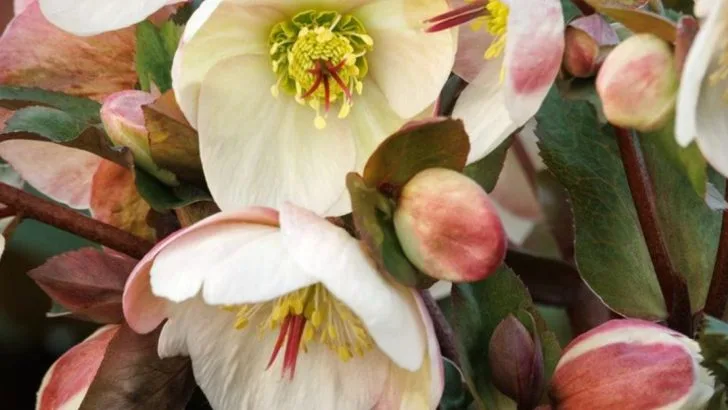Not every plant waves the white flag when the temperature drops. Some are true survivors, built to handle freezing winters, snow, and icy winds without skipping a beat. Whether you live in a region with harsh cold snaps or unpredictable frosts, having plants that can brave the chill is essential for keeping your garden alive through the coldest months.
These 17 tough-as-nails plants aren’t just cold-tolerant—they actually thrive in frosty climates. From resilient perennials to hardy shrubs and evergreens, this list is packed with choices that will bring beauty and structure to your garden even when everything else is buried under snow.
Wintergreen Boxwood
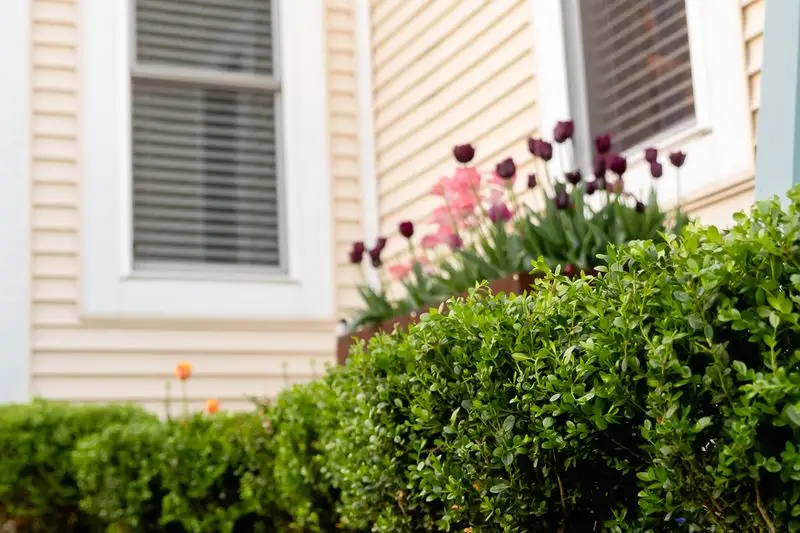
Wintergreen Boxwood stands tall through winter’s harshest conditions. Its vibrant green leaves offer a splash of color when most other plants have succumbed to the cold. Perfectly shaped, its dense foliage can be styled into neat hedges or left untamed for a more natural look.
The adaptability of Wintergreen Boxwood makes it a favorite among landscapers who need reliable greenery. Though it prefers a sunny spot, it tolerates shade with grace, making it versatile for any garden.
A native to the eastern United States, this boxwood variety is a testament to nature’s resilience.
Snowdrop
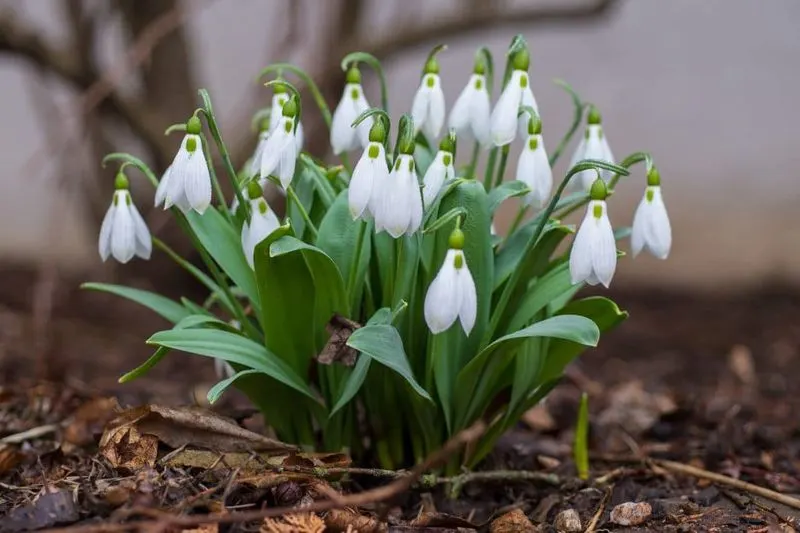
Amidst the snow, tiny Snowdrop flowers emerge, heralding the promise of spring. Their drooping, bell-shaped blooms are often the first to break winter’s hold. Beyond their beauty, Snowdrops are tough, thriving in cold climates where many plants falter.
Their presence in the garden symbolizes hope and renewal. Easy to care for, they require minimal attention once planted, making them ideal for busy gardeners.
Snowdrops are often associated with Victorian-era gardens, where they were cherished for their elegance and resilience.
Hellebore
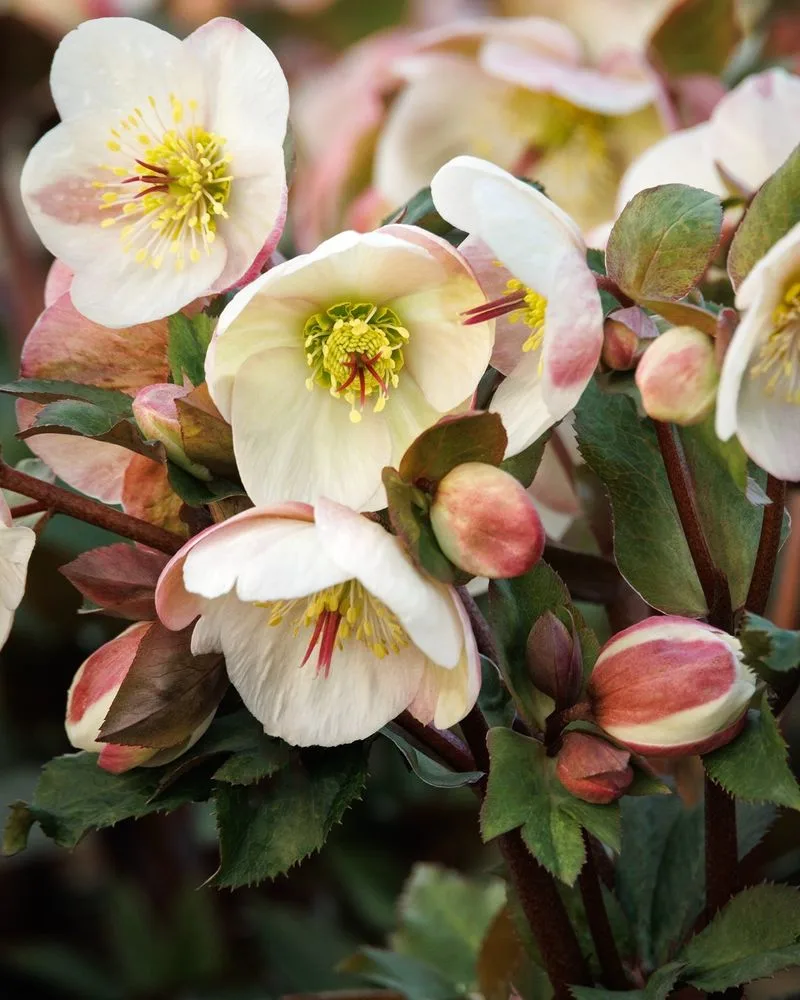
Hellebores, often nicknamed the “Christmas Rose,” defy winter’s grip with their striking blooms. These flowers come in various hues, from deep purples to soft pinks, adding a touch of color to the winter garden.
They are low-maintenance, thriving in shaded areas where others struggle. Hellebores are beloved for their longevity, often lasting several weeks even in harsh conditions.
Originating from Europe and Asia, these plants have become a staple in gardens worldwide, admired for their ability to bloom amid the cold.
English Ivy
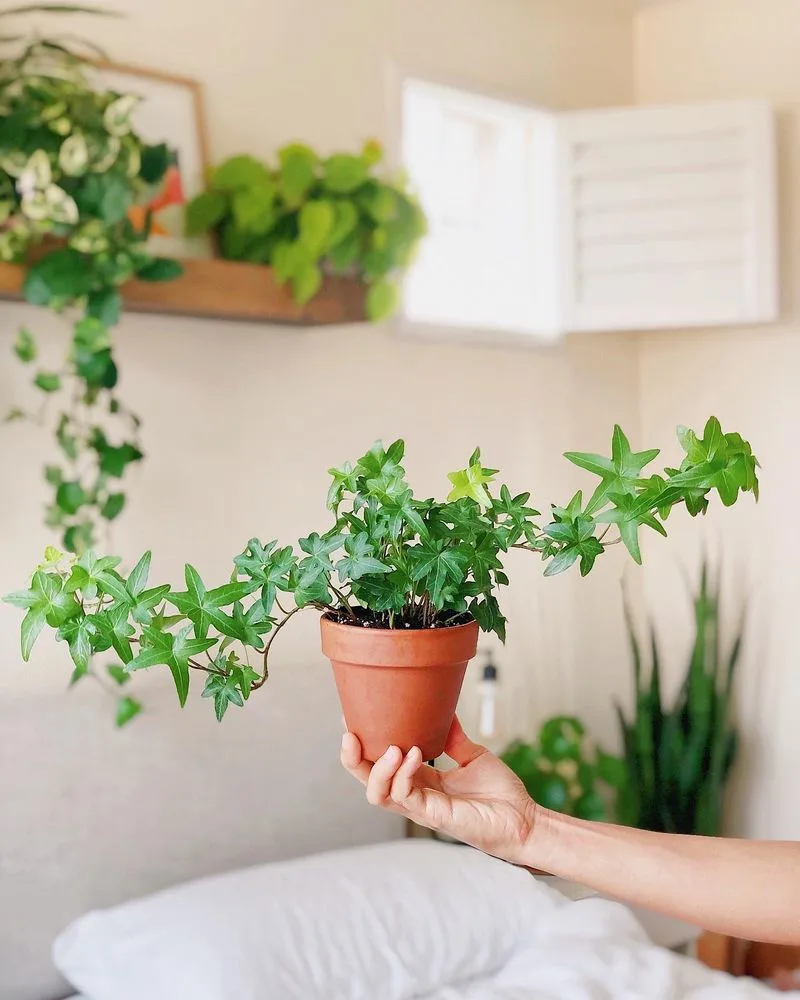
English Ivy transforms any dull winter scene with its evergreen leaves. Known for its tenacity, this plant clings to walls, trellises, and fences, blanketing them in lush greenery. Its ability to thrive in shade makes it a versatile choice for those tricky garden spots.
Even in freezing temperatures, English Ivy remains steadfast, providing a vibrant contrast against the snowy backdrop. It’s a favorite for creating living walls that keep gardens looking alive year-round.
Historically, English Ivy has been a symbol of fidelity and eternal life, often used in holiday decorations.
Norway Spruce
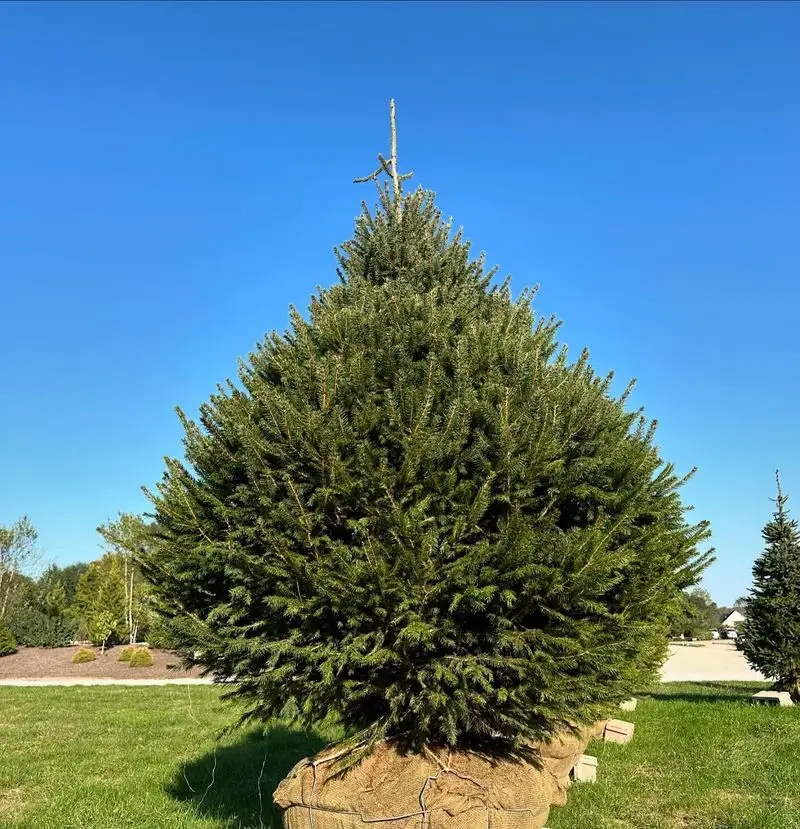
Majestic and imposing, the Norway Spruce is a staple in winter landscapes. Its towering form and deep green needles withstand winter’s worst, providing shelter and food for wildlife. This evergreen’s symmetrical shape adds architectural interest to gardens.
As a fast-growing conifer, it’s ideal for those wanting quick impact in their outdoor spaces. The Norway Spruce is often used as a Christmas tree, bringing festive cheer to homes worldwide.
Native to Europe, this tree has adapted well to various climates, making it a popular choice for sustainable forestry practices.
Winterberry Holly
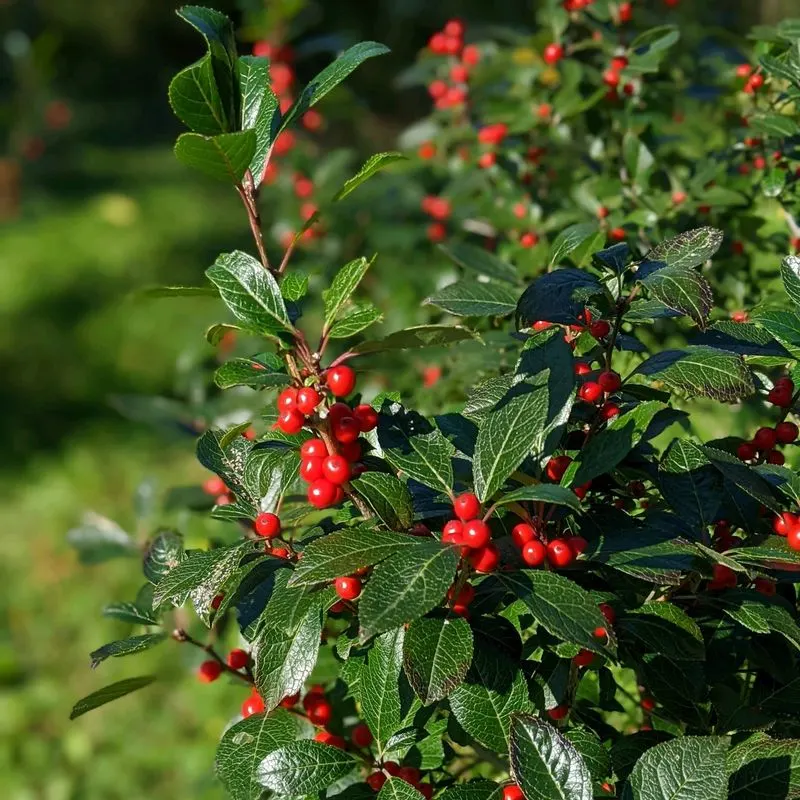
Winterberry Holly lights up the winter landscape with its vibrant red berries. As its leaves fall, the berries remain, creating striking visuals against the snow. These berries also provide food for birds, adding life to the garden.
This deciduous holly thrives in wet, acidic soils, often found in bogs and swamps. Winterberry’s adaptability makes it a great choice for less-than-ideal conditions.
Used in traditional medicine by Native Americans, Winterberry carries a rich history, symbolizing survival and endurance through tough winters.
Siberian Iris
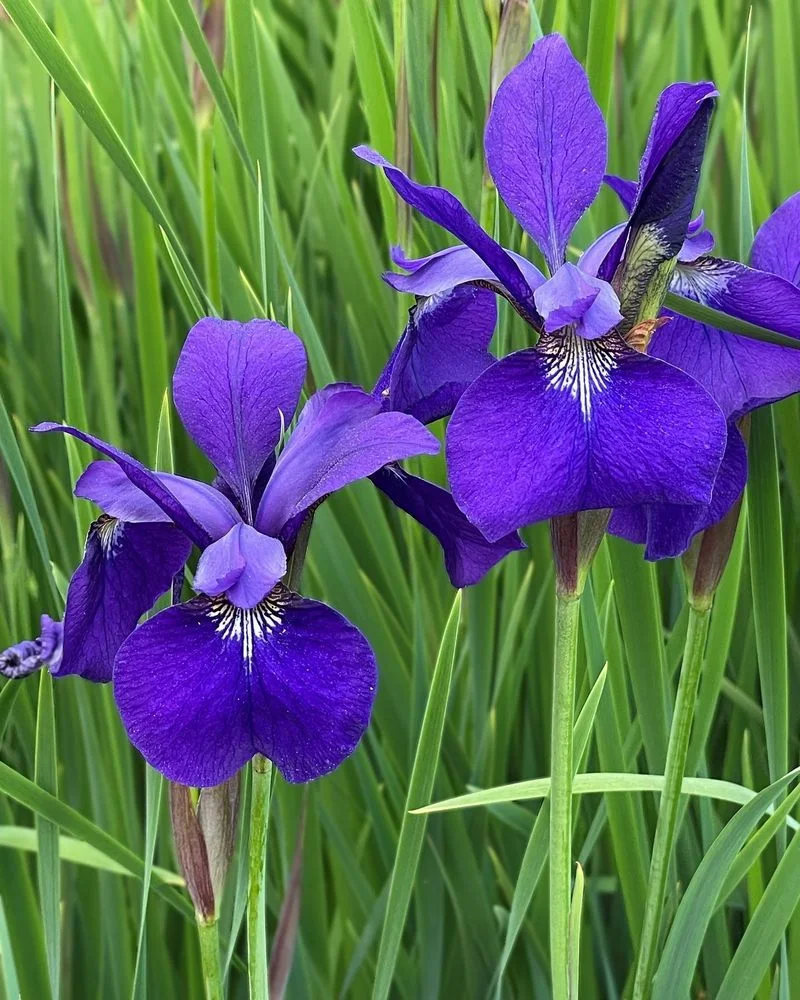
The Siberian Iris dances gracefully through winter, withstanding the cold with ease. Its slender, grass-like leaves and striking blue blooms create a picturesque scene, even as frost settles.
These irises are low-maintenance, thriving in damp soils and requiring little care. Their resilience makes them a favorite among gardeners seeking beauty without the hassle.
Native to the grasslands of Siberia, this iris has long been cherished for its enduring qualities and the splash of color it brings to monochrome winter landscapes.
Rock Cotoneaster
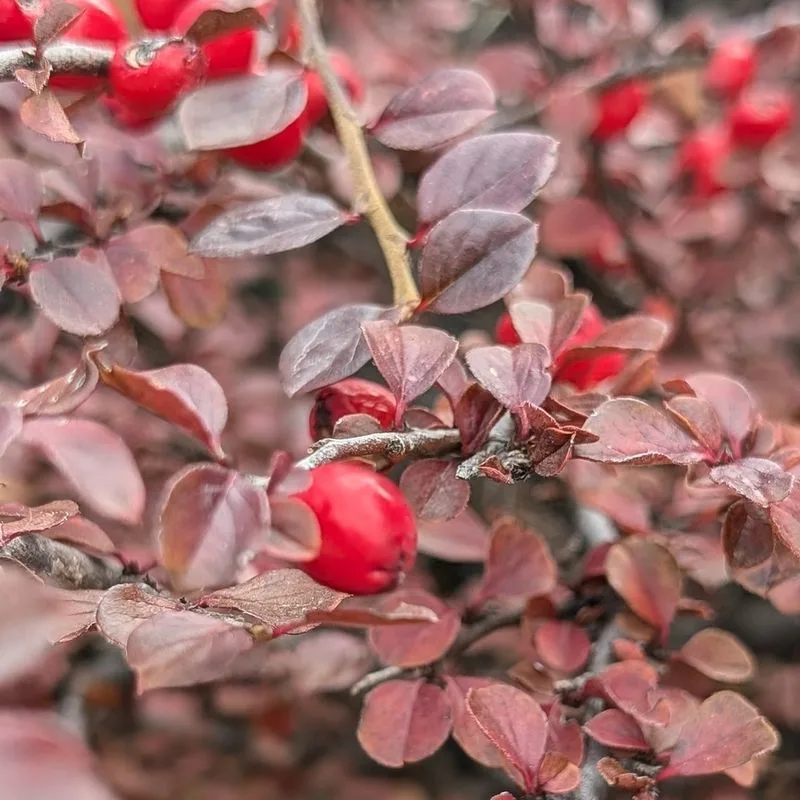
Rock Cotoneaster weaves a tapestry of beauty with its arching branches and bright red berries. As snow settles, the berries stand out, creating a vibrant winter display. Its dense growth makes it ideal for ground cover or hedging.
Tolerant of poor soil conditions, this plant thrives where others may struggle, proving its hardiness. It’s a great choice for slopes or rocky gardens.
Originating from Asia, Rock Cotoneaster is known for its adaptability and long-lasting appeal, providing visual interest even in the heart of winter.
Red Twig Dogwood
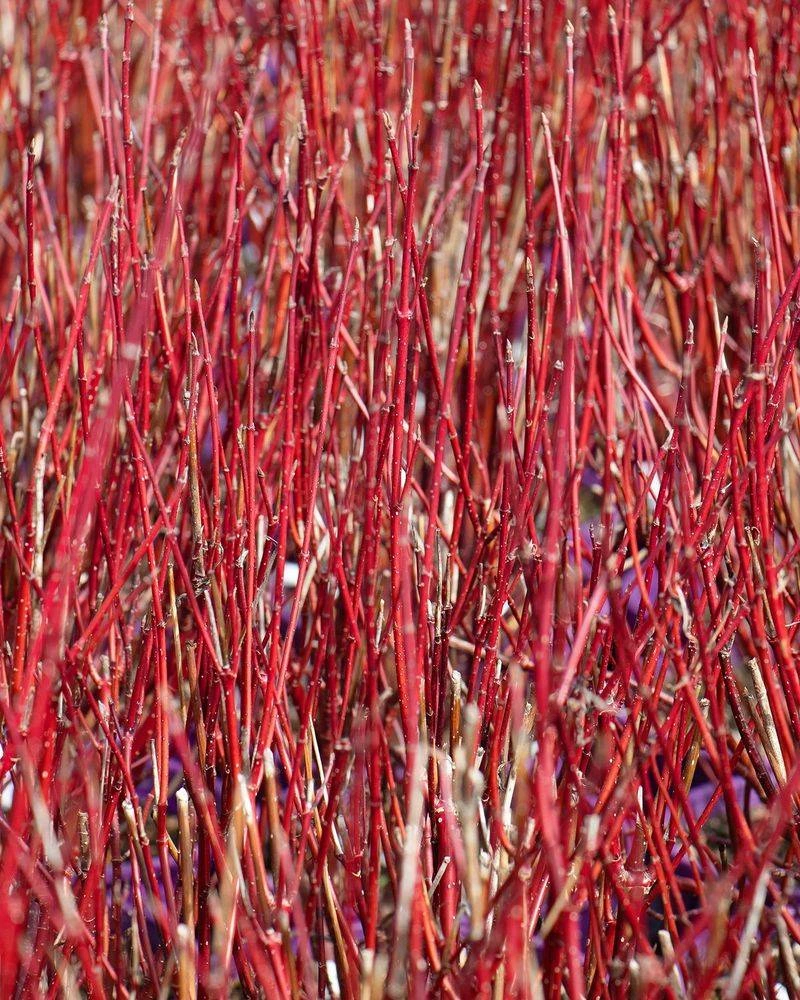
Red Twig Dogwood transforms the winter garden with its striking red stems. When leaves fall, these vibrant branches become the focal point, creating a dramatic contrast against the snow.
This shrub is easy to care for, thriving in a variety of soil types and requiring minimal pruning. It’s perfect for adding color and structure to winter landscapes.
Native to North America, Red Twig Dogwood is often used in naturalistic garden designs, valued for its architectural presence and seasonal interest.
Japanese Yew
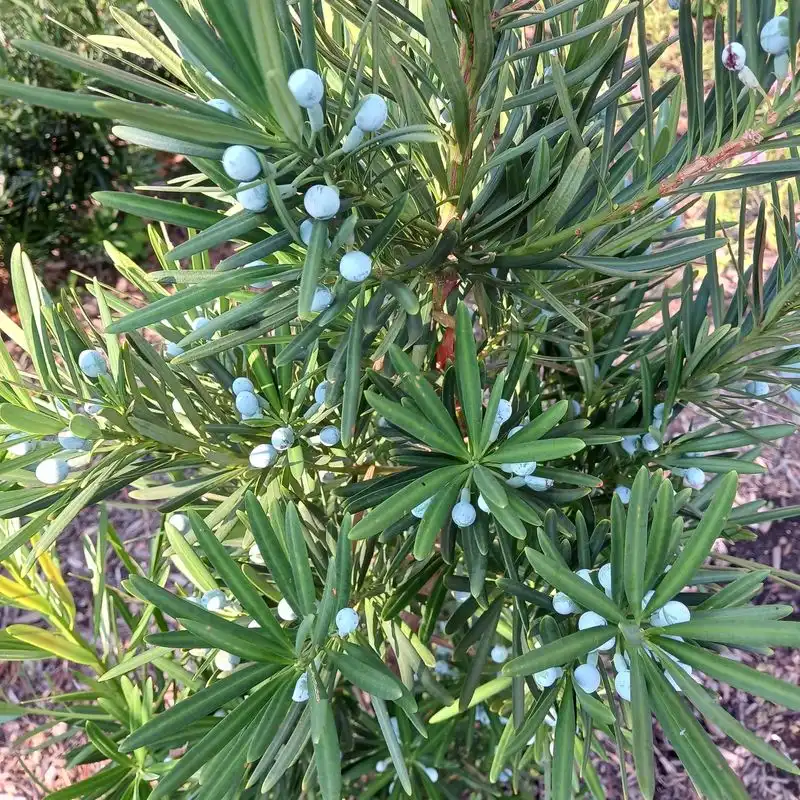
The Japanese Yew stands as a symbol of longevity and resilience. Its dark green needles and red berries provide visual interest throughout the winter months. This evergreen is known for its adaptability, thriving in sun or shade.
Ideal for topiary, Japanese Yew can be shaped into intricate designs, adding an element of art to gardens. Despite the cold, it remains steadfast, offering structure and beauty.
Originating from Japan, this yew has been revered in gardens for centuries, appreciated for its enduring nature and versatile uses.
Heather
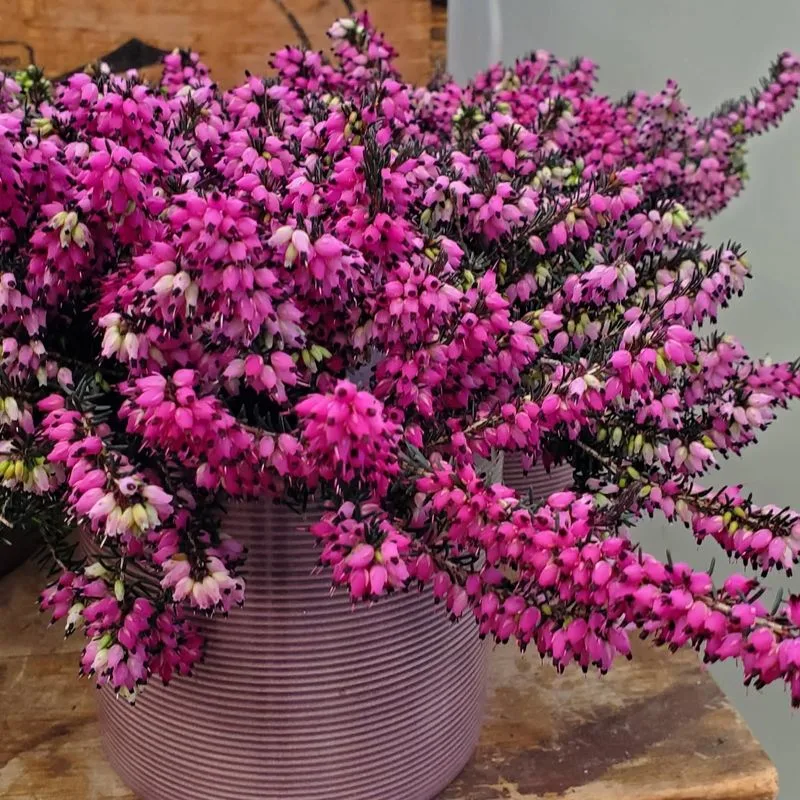
Heather brightens the winter landscape with its vibrant blooms and hardy nature. These low-growing shrubs produce a carpet of color, ranging from pinks to purples, even as temperatures drop.
Thriving in acidic soils, Heather is a wonderful choice for rock gardens or borders. Its evergreen foliage adds texture and depth throughout the year.
Native to Europe, Heather has been cherished in folklore and tradition, often associated with good luck and protection, making it a beloved addition to any garden.
Arctic Willow
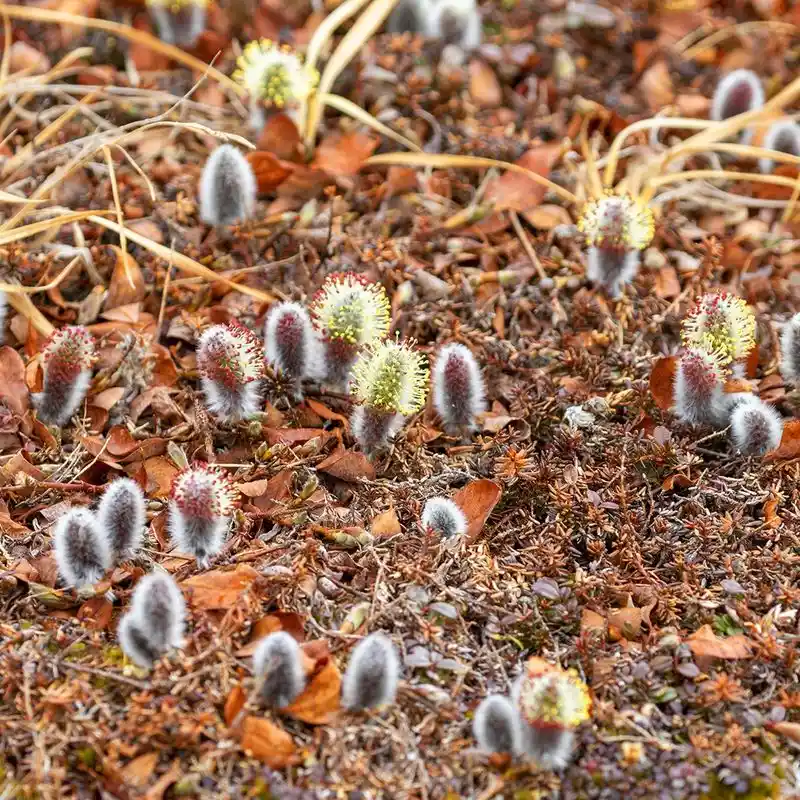
Adapting to the coldest environments, the Arctic Willow thrives where few others can. Its flexible branches are covered in silvery leaves and fluffy catkins that stand out against snowy backdrops.
This shrub is perfect for gardeners seeking low-maintenance beauty in cold climates. It stabilizes soil and provides habitat for wildlife, contributing to a healthy ecosystem.
Indigenous to Arctic regions, the willow has been utilized by native cultures for its medicinal properties and resilience, making it an invaluable plant in challenging conditions.
Yarrows
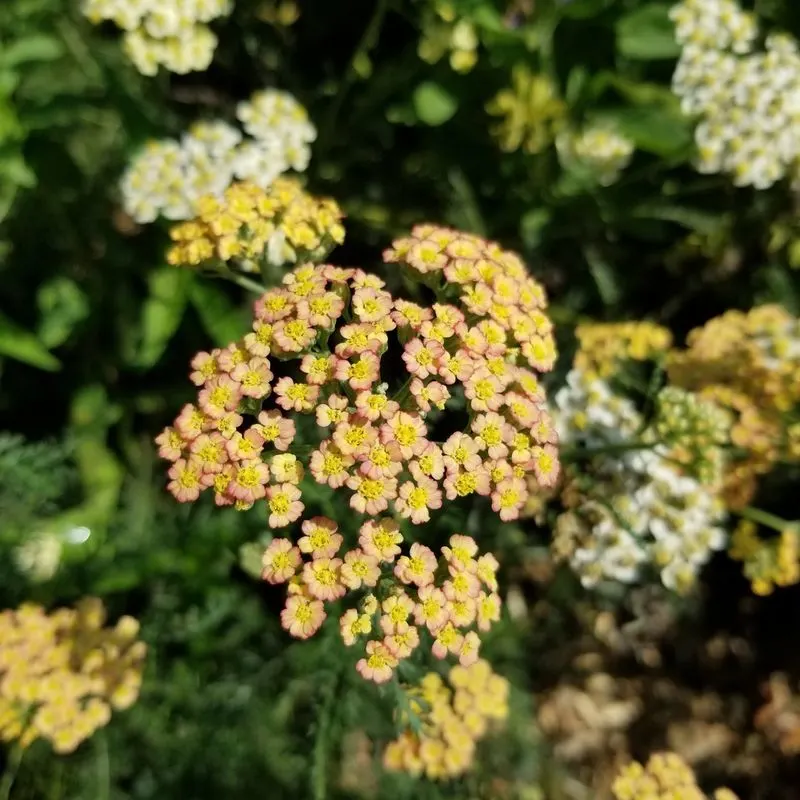
Yarrows defy the winter chill with their feathery leaves and sturdy stems. Even as snow blankets the ground, their flowerheads persist, adding a whimsical touch to the garden.
These perennials are incredibly hardy, requiring minimal care and thriving in poor soils. Their drought-tolerant nature makes them a versatile choice for various garden designs.
Historically used for medicinal purposes, Yarrows have been revered for their healing properties. Their ease of growth and enduring presence make them a staple in winter gardens.
Northern Sea Oats
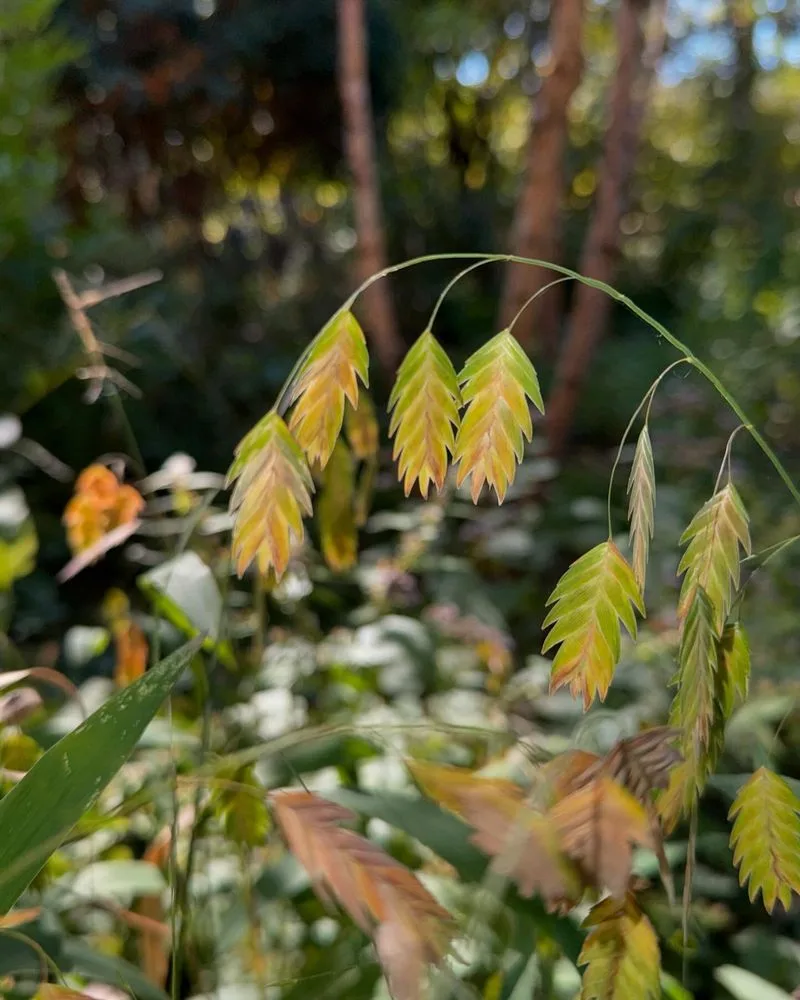
Northern Sea Oats bring movement and texture to winter landscapes. Their distinctive seed heads sway gracefully in the breeze, catching the light and creating visual interest.
These grasses are low-maintenance, thriving in various soil conditions and requiring little attention. Their clumping habit makes them ideal for erosion control and naturalistic plantings.
Native to North America, Northern Sea Oats add a touch of wild beauty to gardens, symbolizing strength and flexibility in challenging environments.
Mountain Laurel

Mountain Laurel captivates with its glossy leaves and beautiful blooms, even in winter’s depths. Its evergreen foliage provides year-round interest, while its flowers offer a splash of color in spring.
This shrub prefers acidic, well-drained soils and can tolerate shade, making it versatile for various garden settings. Its resilience in cold climates makes it a favored choice for winter gardens.
Native to the eastern United States, Mountain Laurel has been celebrated for its beauty and adaptability, often featured in natural landscapes and woodland gardens.
Bergenia
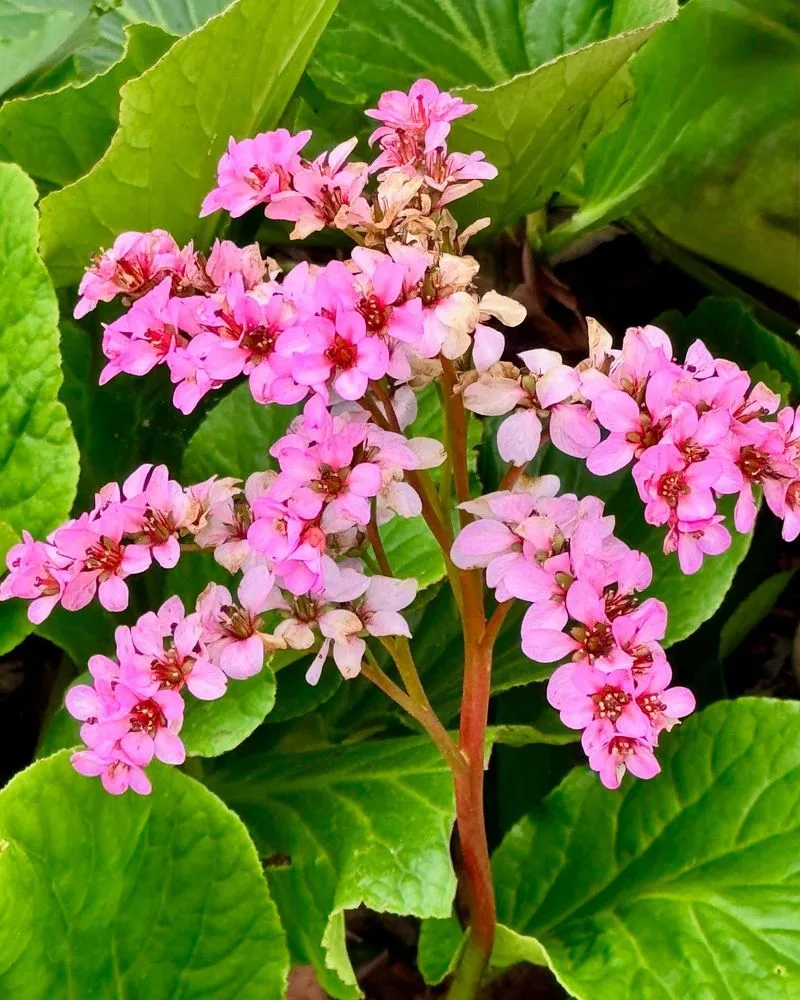
Bergenia, also known as “Elephant Ears,” stands out with its large, leathery leaves and vibrant pink blooms. Even in freezing temperatures, this plant retains its appeal, offering a splash of color and texture.
This perennial is tough, thriving in shaded areas and tolerating poor soil conditions. Its ability to withstand cold makes it a reliable choice for winter gardens.
Native to central Asia, Bergenia has been valued for its decorative and practical uses, providing ground cover and visual interest throughout the year.
Sweet Box
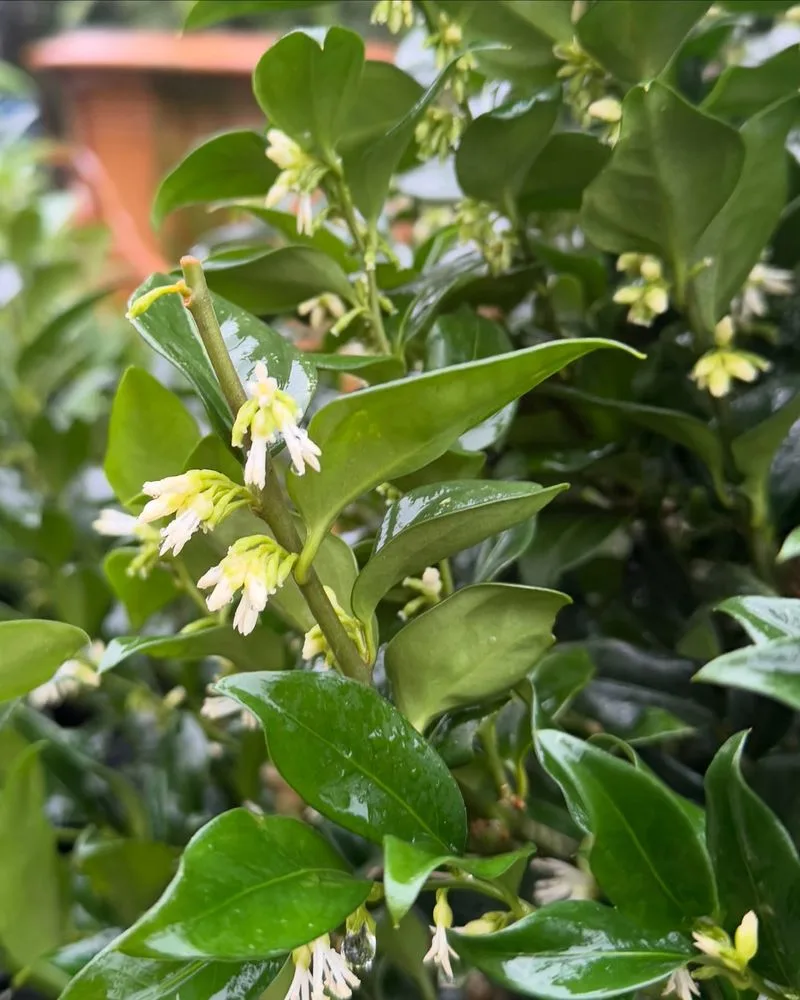
Sweet Box is a delightful addition to winter gardens, with its dark green leaves and fragrant white flowers. Even as snow falls, this shrub remains steadfast, providing beauty and scent when most other plants are dormant.
Preferring shade, Sweet Box is perfect for those tricky spots where sun-loving plants struggle. Its low-maintenance nature makes it an ideal choice for busy gardeners.
Native to East Asia, Sweet Box is often used in traditional gardens for its elegance and subtle charm, offering a hint of the exotic in any landscape.

